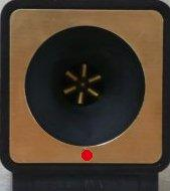Chasing an Interference Bug

[August 2009] Dealing with the neighbors when there is an interference complaint can be as much of a “public relations” problem as a technical one. Burt Weiner has had a lot of experience in tracking down – and sometime even solving – interference issues.
It started with a call from a client station regarding an interference problem. A resident, located about five miles from the client’s 50 kW transmitter, was complaining that the station was wiping out the entire AM band. This resident had also called the FCC and complained about the interference and wanted it resolved under the “blanketing rules.”
Initial Contact
I envisioned a poorly designed radio with a wide-open front end, typical of this type of complaint.
One of my most successful strategies is to compare this problem to standing outside at night and looking at a dim star. If you stand near a street light it is difficult to see the star because of the strong nearby light illuminating the dust and moisture in the air, not to mention stopping your eyes down. If you move a short distance away from the street light you can see the star better.
Radio reception is essentially the same thing. The radio is trying to hear a comparatively weaker station, the distant star, near a very bright light, the very strong nearby station. A set of blinders – better front end selectivity – can do wonders. Non-technical people can usually relate to that example.
I called the resident and, almost before I could say “Hello,” was rudely told I had better do something about it or else! Hence, I made an appointment to visit with them at a time when the station was at day power so I could hear first-hand what was happening – and moreover to see if I could smooth down some feathers.
Greeting With a Snarl
As I usually do, I took a field meter and a portable radio which seems to operate fairly well in strong RF situations. With these I can usually demonstrate to our neighbors that the station is not doing anything wrong nor is at fault.
Upon my arrival, a lady greeted me with a friendly snarl informing me the problem was not happening today. She had not bothered to tell me this when I called just before leaving my office. She insisted it had to be the station’s fault, “A technical problem of some kind.”
I explained that sometimes appliances or electrical wiring can cause this to happen, only to be given a suspicious look, accompanied by a low Marge Simpson-type growl.
Interference Hunting
The radio experiencing the problem was located in a room with several computers, none of which were on at the time. We turned them on and tried several things, none of which would cause the problem.
I visited and soothed for about forty-five minutes. All during that time no sign of the interference could be heard. But just as I was getting ready to leave – Bang! – there it was; just like she had said, it was all over the dial.
With a problem clearly at hand, I turned on the field meter (which was sitting on my lap) about three feet from the radio. While their radio definitely had the problem, the field meter did not. I tried the portable radio and it was also free of interference. The lady looked at me and backed away slightly as if I were a war-lock or, at a minimum, possessed.
Then, as I put my portable radio near her radio another problem appeared. In addition to the client’s station being heard all over the dial, I heard a strange sweeping sound.
Discovery
I asked if I could walk around in their home, and was given permission. I walked down the hall and into the other rooms holding the portable radio near various electronic devices and each AC outlet. No sign of the problem could be detected until I went into the kitchen.
I eventually homed in on … the breadbox! The interference was overwhelming. Foraging through their breadbox (and being asked if I wanted a sandwich), I uncovered an ultrasonic “Bug Chaser.”

Unplugging and plugging in the device from the AC outlet would cause the interference to disappear and reappear accordingly. Coincidentally, this wall plug was on the opposite side of the same wall as the ra- dio experiencing the problem. Further tests revealed the bug chaser was detecting the radio station and re-transmitting it, everywhere.
The sweeping sound was the result of the swept-oscillator in the bug chaser. And the fact that some of these devices randomly turn on and off provided the explanation for the intermittent nature of the problem.
As a result, I enjoyed a nice dinner at that house.
The Bug is Back!
A couple of months had gone by since the bug chaser adventure when I received another interference call. This was from a fellow who lived quite close to the same transmitter. He claimed that the AM band was being intermittently wiped out by the station. This had been happening intermittently for several years, but until recently he only listened to FM.
In our conversation he asked why this might be happening. I really did not want to come out and blame his radio – not a great way to start out. I did however use the blinding light example and the possibility of electrical power circuits or other appliances causing this to intermittently happen.
He asked what I meant by “other appliances.” So I told him the story of the bug chaser. Then he asked me to hold on for a moment. He set the phone down. I could hear rattling and crashing around in the distance.
When he came back he said, “Yep, that’s what it was.” I asked, “what was „what‟?” He told me he had had a bug chaser in his attic for several years. The AC cord for it came out through an attic opening into the garage and down the wall to a plug outlet. (Can you say “that is a great vertical aerial?”)
As soon as he unplugged it the problem stopped.
The moral to this story is that when chasing down an interference complaint, a bug chaser in the hand is worth two in the attic.
– – –
Burt Weiner has been creating and chasing down problems in Los Angeles for many years. Contact Burt at biwa@att.net
